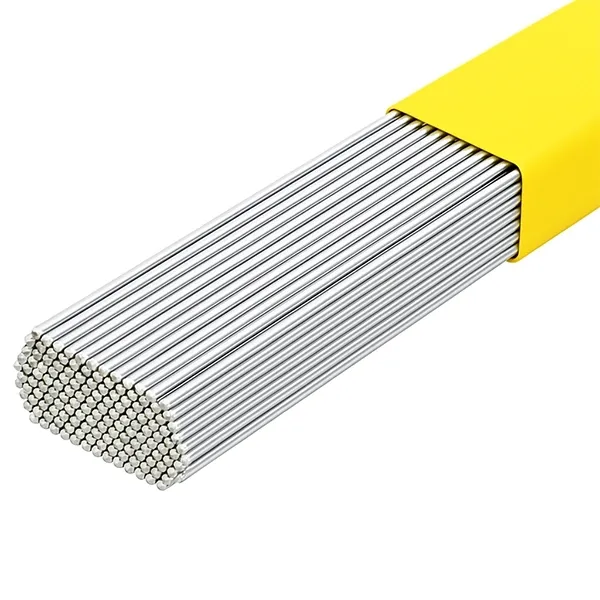TIG Welding Rods
TIG welding rods are essential tools used to supply filler material to the weld pool. These rods help achieve high-quality results, especially in precise metal joining applications.
TIG welding rods should be carefully selected to ensure compatibility with alloyed or stainless metals. Using the correct rod leads to stronger weld seams and smoother surfaces. Varying by material type, these rods play a crucial role in directly influencing weld quality. Additionally, they significantly improve the efficiency and duration of the welding process.
Points to consider when selecting the right welding rod:
- The filler metal must be suitable for the chemical composition of the surfaces to be joined.
- In areas exposed to high temperatures, products with a durable structure should be used.
- The diameter of the rod should be carefully chosen according to the thickness of the metal.
- Products with low spatter rates should be preferred to reduce post-weld workmanship.
- From a safety perspective, appropriate consumables should be evaluated together.
What Are TIG Welding Rods?
TIG welding rods are auxiliary materials that melt during the welding process and provide filler to the weld area. These rods do not act as electrodes in TIG welding; they only supply additional metal to the weld pool. The process is often used for joining stainless and thin metal surfaces, as it provides high precision.
TIG rods, produced to be compatible with different material types, directly affect the quality of the process. They yield successful results on surfaces like stainless steel, carbon steel, aluminum, and nickel-based metals. The diameter of the rod should be chosen based on the current used and the thickness of the material.
TIG rods are available in various forms, each serving a specific need:
- Rods with high melting points are preferred for hard metal surfaces.
- Softer options stand out for thin and delicate parts.
- Special filler rods are available for different alloys.
- They offer low spatter and clean trace advantages, especially in thin sheet welding.

To improve welding quality, the rod should be compatible with the welding wires used. This ensures the homogeneity of the molten pool and increases strength. In TIG welding, the quality of the materials used is as important as the welder’s skill.
The technical capacity of the equipment used in TIG welding directly influences weld quality. Especially when working with different metals, current balance, heat control, and stability are critical.
TIG welding machine prices may vary depending on these features and the device’s performance capacity. A machine with the necessary specifications is essential for a smooth and efficient process.
Some TIG rods are available in alloyed types, produced by mixing different elements. This allows for stronger and more flexible weld seams. With the right choice, labor, time, and cost advantages can be achieved.
Frequently Asked Questions
The type of material to be welded, its thickness, and the application method are key in selecting the rod. Also, melting temperature and mechanical strength must be considered.
No, not every rod is compatible with every metal. Material incompatibility can result in weak weld seams. The appropriate type of rod must be selected.
The rod provides filler to the molten metal and contributes to the strength of the joint. It also directly impacts weld quality.
Yes, inert gases like argon are generally used. These gases protect the weld area from external factors, enabling a high-quality weld.
Different alloys affect the durability, flexibility, and corrosion resistance of the weld seam. The rod should be selected based on the application purpose.
TIG rods are fed manually into the molten metal, while MIG wires are automatically fed by the machine. Therefore, the TIG method is preferred for more controlled and precise applications.
You can contact Eko Kaynak for TIG welding rods and other welding equipment.

